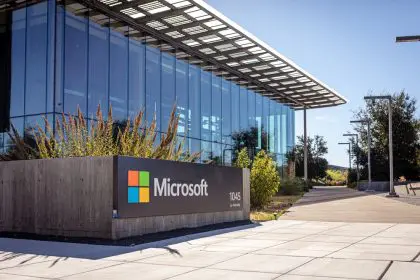The pandemic forced a massive remote work experiment that revealed both the possibilities and limitations of distributed teams, but the future of work won’t simply return to pre-2020 office-centric models. Instead, hybrid arrangements that blend remote flexibility with in-person collaboration are emerging as the dominant employment structure, fundamentally changing how we think about careers, productivity, and work-life integration.
This transformation extends far beyond simply working from home occasionally. Companies are redesigning organizational structures, compensation models, and performance metrics to accommodate a workforce that may never again be tied to specific geographic locations or traditional office schedules.
Technology advances enable seamless distributed collaboration
Virtual reality and augmented reality technologies are rapidly improving to create immersive meeting experiences that replicate in-person interaction more effectively than video calls. These tools will soon allow remote workers to feel genuinely present with colleagues, reducing the isolation and communication challenges that currently limit remote work effectiveness.
Artificial intelligence is streamlining remote work coordination through smart scheduling, automated project management, and real-time language translation that enables global teams to collaborate effortlessly across time zones and language barriers. These AI assistants handle routine coordination tasks that previously required human oversight.
Cloud computing infrastructure continues expanding to support sophisticated collaboration tools, real-time document editing, and secure data access from anywhere in the world. This technological foundation makes location-independent work not just possible but often more efficient than traditional office-based arrangements.
Advanced analytics help managers track productivity and engagement in remote teams through meaningful metrics rather than simple activity monitoring, creating performance management systems based on outcomes rather than hours logged or physical presence in an office.
Companies redesign office spaces for hybrid functionality
Traditional offices are transforming from assigned desk spaces into flexible collaboration hubs optimized for meetings, creative sessions, and team-building activities that benefit from in-person interaction. This shift reflects the understanding that remote work handles routine tasks effectively while offices serve specific collaborative purposes.
Hot-desking and flexible workspace arrangements allow companies to reduce real estate costs while providing employees with professional environments when they need them. These spaces include specialized areas for video calls, quiet work, and collaborative projects that accommodate varying work styles and tasks.
Satellite offices and co-working partnerships enable companies to provide professional workspace options in multiple locations rather than concentrating all employees in expensive urban headquarters. This distributed approach reduces commuting time while maintaining access to professional environments.
Office technology is being upgraded to seamlessly integrate remote and in-person participants in meetings and collaborative work, eliminating the awkward dynamics where remote workers feel excluded from office-based discussions and decision-making processes.
Geographic arbitrage creates new economic opportunities
Remote work enables employees to live in lower-cost areas while earning salaries traditionally associated with expensive urban markets, creating significant lifestyle improvements and financial advantages for workers who can maintain urban-level productivity from rural or suburban locations.
Companies gain access to global talent pools rather than being limited to hiring within commuting distance of their offices, potentially finding better-qualified candidates while reducing salary costs in expensive metropolitan areas where competition for local talent drives up compensation.
International remote work arrangements are becoming more common as countries develop digital nomad visas and tax treaties that facilitate cross-border employment relationships, creating opportunities for companies and workers to optimize for both cost and lifestyle preferences.
Economic development patterns are shifting as remote workers bring urban incomes to smaller communities, revitalizing rural areas and creating new economic opportunities in previously overlooked regions with lower living costs but high quality of life.
Work-life integration replaces traditional boundaries
Flexible scheduling allows employees to optimize their work hours around personal energy patterns, family responsibilities, and lifestyle preferences rather than conforming to arbitrary 9-to-5 schedules that may not align with peak productivity times or personal obligations.
Results-oriented performance management focuses on accomplishments and deliverables rather than hours worked or physical presence, creating accountability systems that reward efficiency and effectiveness rather than time spent appearing busy in an office environment.
Continuous learning and skill development become more important as remote workers must demonstrate value through expertise and results rather than office politics or physical visibility, creating career advancement opportunities based on merit and contribution rather than networking advantages.
Challenges require innovative solutions
Social isolation and career development concerns for remote workers need addressing through intentional mentorship programs, virtual networking opportunities, and structured career advancement pathways that don’t depend on informal office interactions and visibility to management.
Management training must evolve to support distributed teams effectively, teaching leaders how to maintain team cohesion, provide meaningful feedback, and support employee development without relying on traditional in-person supervision and relationship-building approaches.
Legal and regulatory frameworks are adapting to address tax implications, employment law compliance, and worker protection issues that arise when employees work across state or international boundaries, requiring new approaches to employment contracts and benefit administration.
The future of work will likely settle into personalized arrangements where individual roles, company cultures, and employee preferences determine the optimal balance of remote and in-person work rather than one-size-fits-all policies that ignore the diversity of work requirements and personal circumstances.

















